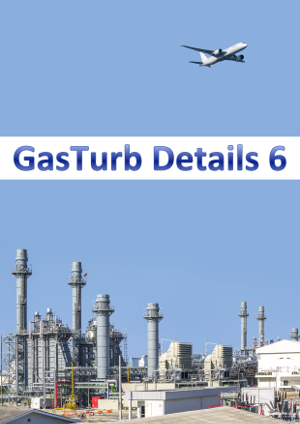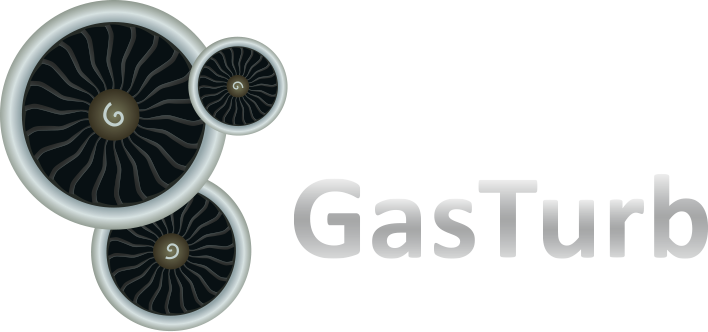Some examples of the many component and property calculation features of GasTurb Details are provided below. The accompanying manual, which can be downloaded here, provides information of the whole scope of GasTurb Details capabilities.
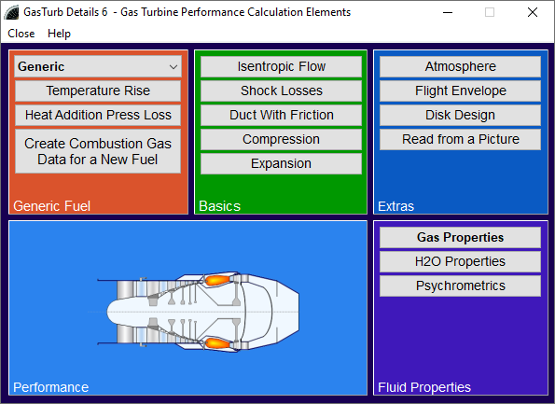
Basics
Isentropic Flow
Isentropic flow correlations can be viewed as graphics and evaluated as numbers from any reasonable combination of given parameters.
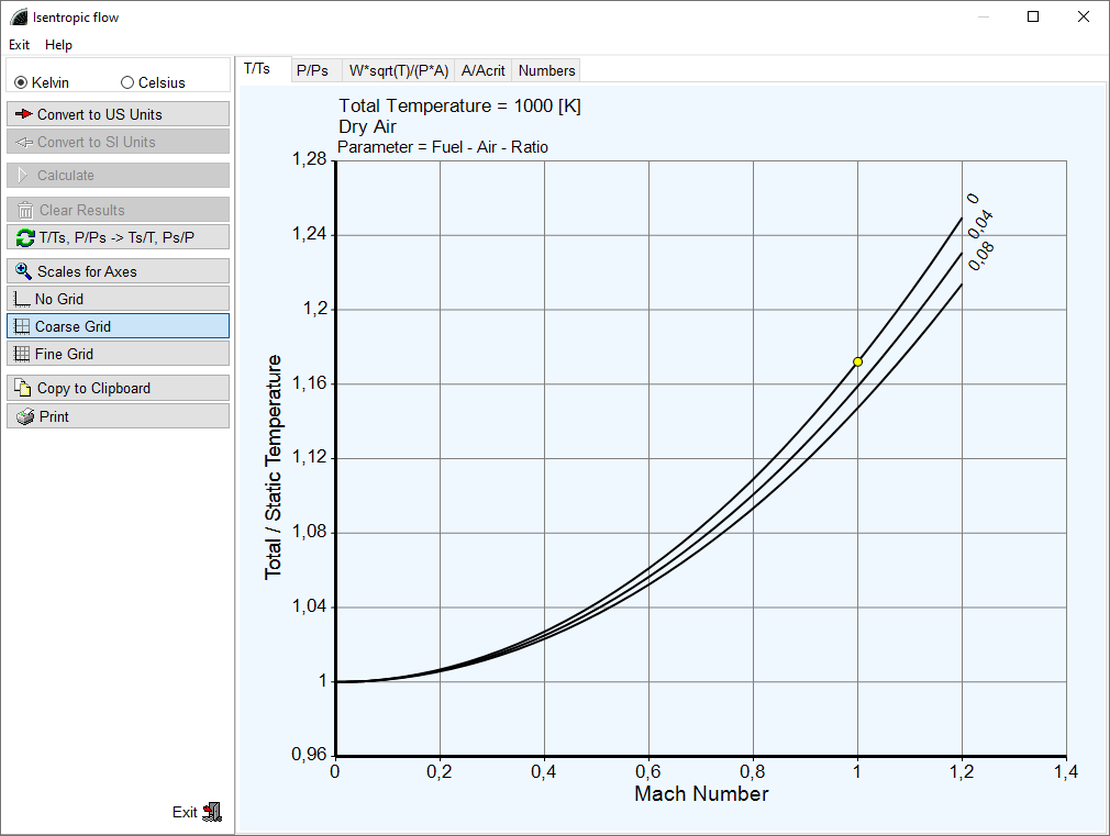
Shock Losses
Shock losses are of interest for supersonic aircraft intakes, for example. The upstream Mach number and shock angle can be varied in an interactive image. The static pressure ratio Ps2/Ps1 and the total pressure ratio P2/P1 are shown as bars on the right side of the image. Note that all calculations are made using a constant isentropic coefficient.

Duct with Friction
In a constant area duct with friction, the exit number increases with duct inlet Mach number until the duct exit chokes. A series of friction pressure loss points with duct exit Mach numbers from subsonic to supersonic, plotted in the temperature-entropy diagram, is called the Fanno line.
The total pressure loss in a constant area duct with friction depends on the inlet Mach number and the dynamic head loss coefficient cld. The duct total pressure at the duct exit is calculated as P2 = P1-cld * (P1 - Ps1).
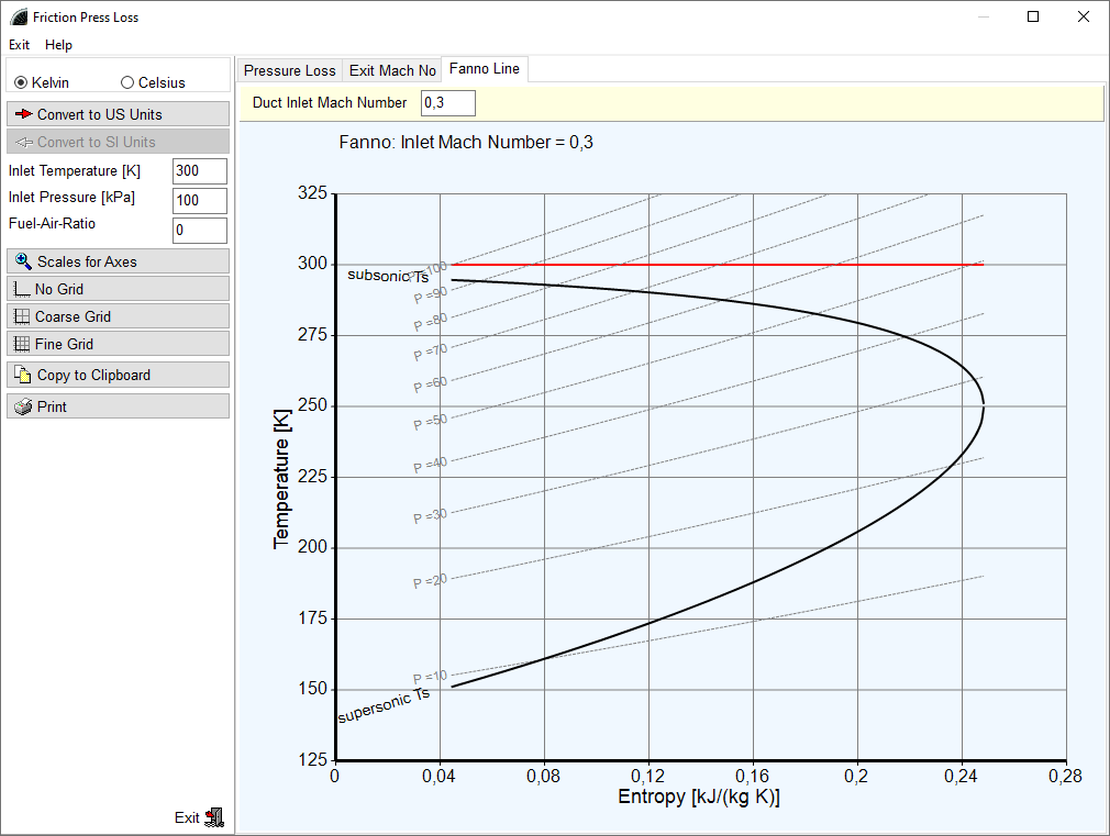
Generic Fuel
Heat Addition
The temperature increase for a given injected fuel-air-mass ratio depends on the burner inlet temperature, the pressure in the burner, and the gaseous humidity of the air. The data are part of the gas property tables used by GasTurb and GasTurb Details. The numbers have been calculated with the aid of the NASA CEA program, see below.
The accompanying image shows the temperature increase due to combustion of a generic hydrocarbon fuel.

Fuel Composition
The gas property data used by GasTurb and GasTurb Details are created using the NASA Computer program CEA (Chemical Equilibrium with Applications) which calculates chemical equilibrium compositions and properties of complex mixtures. CEA represents the latest in a number of computer programs that have been developed at the NASA Lewis (now Glenn) Research Center during the last 45 years. These programs have changed over the years to include additional techniques. The program has been written in ANSI standard FORTRAN by Bonnie J. McBride and Sanford Gordon. It is in widespread use by the aerodynamics and thermodynamics community, with over 2000 copies in distribution.
With GasTurb Details 6 it is possible to create input data sets for CEA and combine the CEA output files into gas property files for GasTurb and GasTurb Details. A wide variety of liquid and gaseous reactants can be considered as fuel constituents.
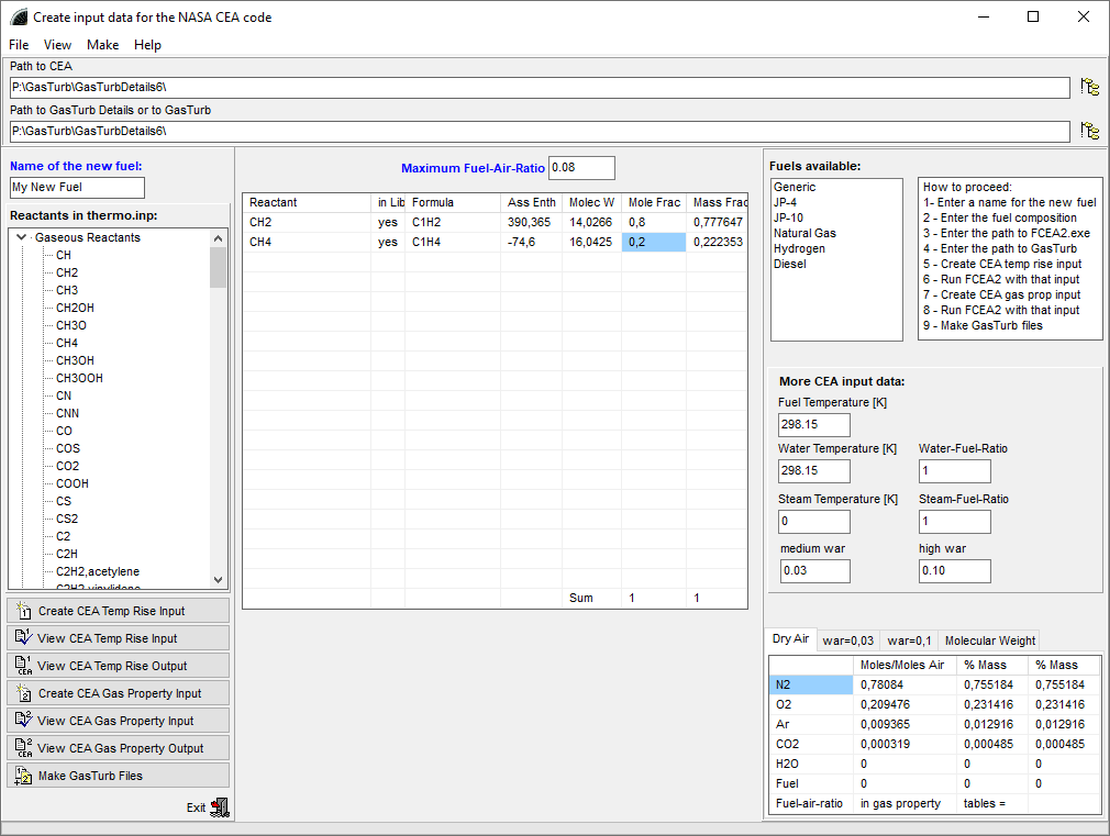
Performance
Uncooled and cooled Turbine
For preliminary uncooled turbine design in GasTurb Details only a small amount of input data is needed.
The algorithm, which is based on a NASA report, yields the velocity triangles and efficiency estimates. GasTurb Details shows the turbine stage loading and the stage flow factor in the Smith diagram.
When comparing efficiency numbers of cooled turbines it is important to maintain clear and correct bookkeeping on the secondary air flows around a cooled turbine.
Several efficiency definitions for cooled turbines are in use. With GasTurb Details you can compare the most often used turbine bookkeeping systems.
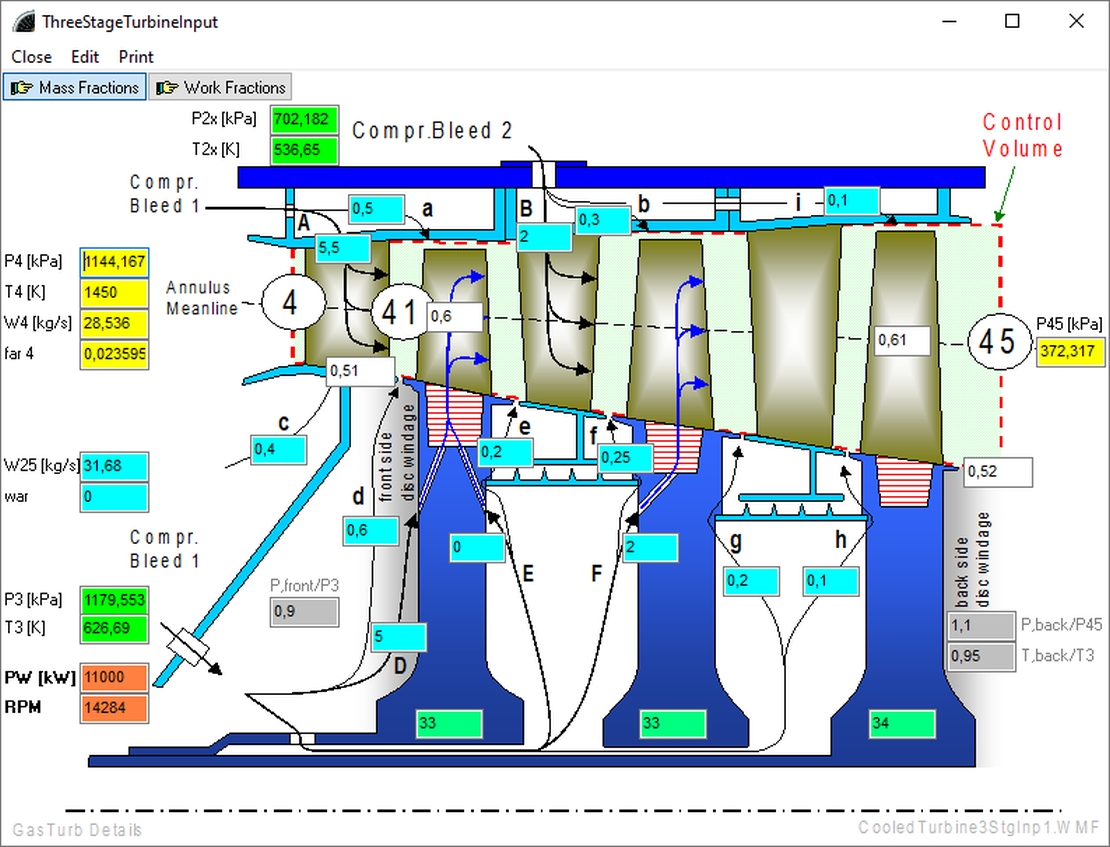
Mixer
The effect of mixing the two streams of a turbofan engine can best be studied with GasTurb Details. If calculated in a full cycle code like GasTurb, this would yield component rematching effects, in addition to the pure mixer performance changes, possibly leading to erroneous impression.
The thrust gain due to mixing (no friction pressure loss) is caused by the temperature difference between the two streams. The difference in total pressure between the cold and hot streams must not be too large.
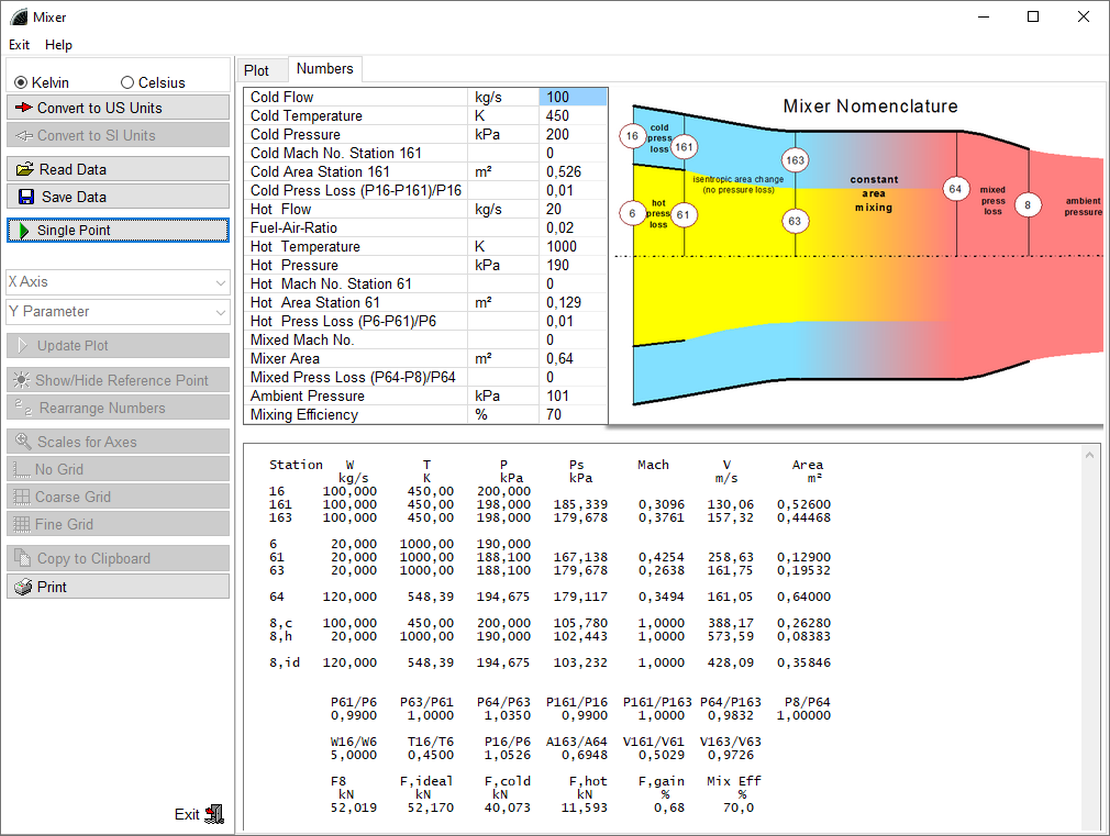
Convergent-Divergent Nozzle
The static pressure within an ideal convergent-divergent nozzle and depending on the back pressure Pamb and the nozzle area ratio A9/A8 can be studied.
Of course also numbers for the flow properties in the convergent-divergent nozzle can be calculated.
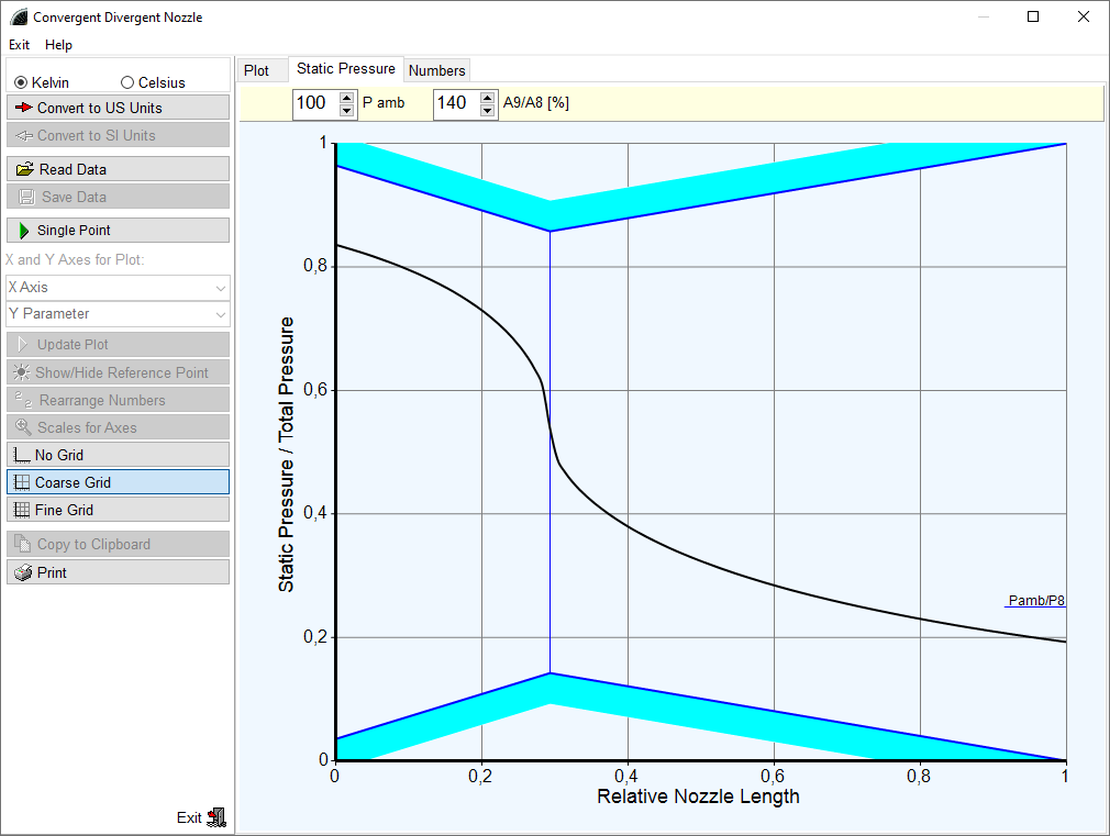
Fluid Properties
Gas Properties
Gas properties are presented both graphically and numerically.

Steam Properties
The steam properties, as used in GasTurb and GasTurb Details 6, are based on the publications of the International Association for the Properties of Water and Steam (IAPWS). The formulas were published in August 2007 in the document iapwsif971.pdf which can be downloaded from http://www.cheresources.com/iapwsif97.shtml.
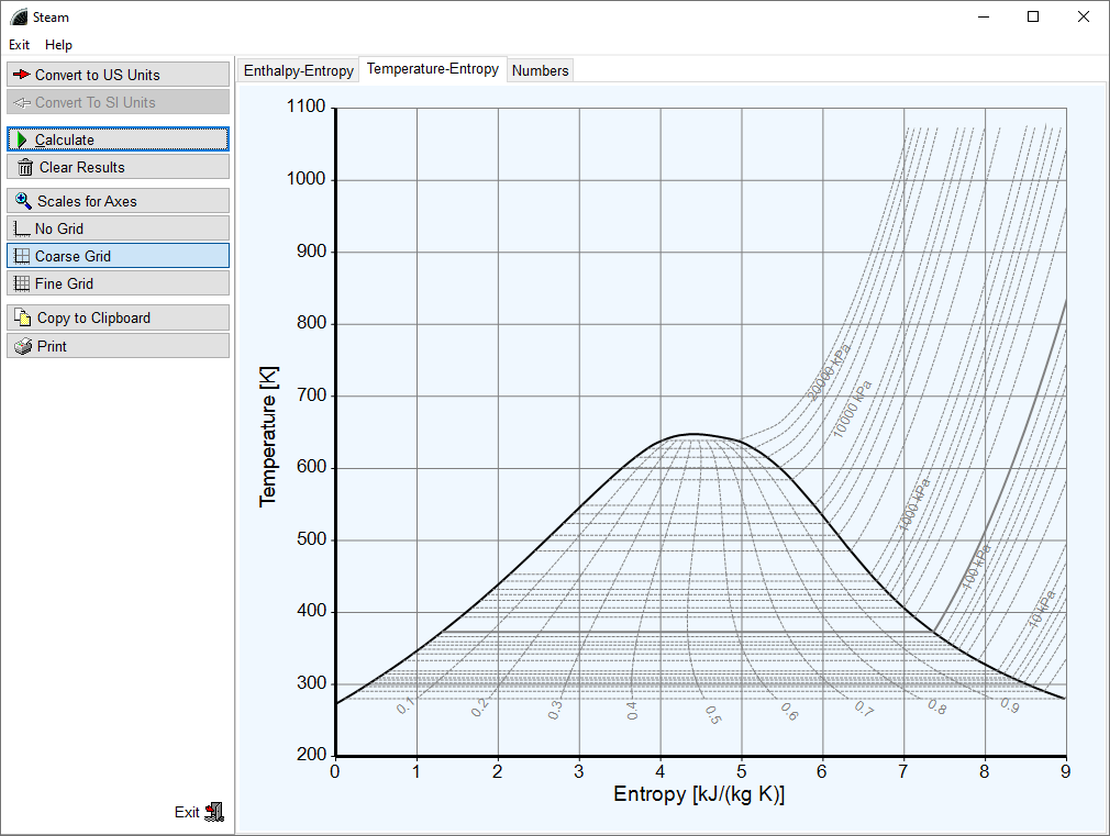
Psychrometrics
Psychrometrics describes the properties of mixtures of water vapor and air. A psychrometric chart is a graph depicting the thermodynamic parameters of moist air at a constant pressure. The cycle of a gas turbine when under influence of the properties of the gas (the working fluid) illustrates the high relevance of these properties for gas turbine performance. The relevant parameter is the water-air-ratio war (the humidity ratio). In gas turbines used for flight propulsion, the water-air-ratio of the working fluid gas usually depends on the weather only. In land-based gas turbines used for power generation, water or steam is sometimes injected upstream of the compressor (for power increase), in the combustion chamber (for NOX reduction) or in the turbine (for cooling purposes).
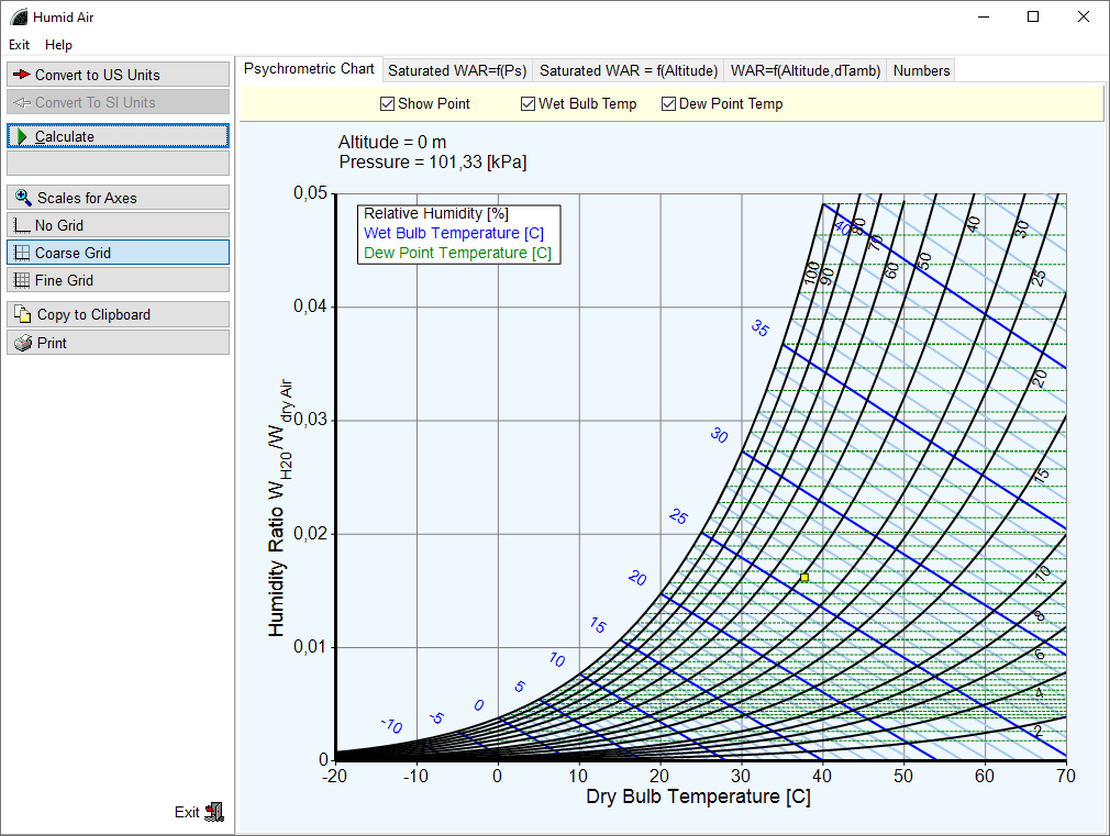
Extras
Atmosphere
Temperature, pressure, density and velocity of sound in the atmosphere vary depending on whether it is an ISA, cold, hot and tropical day. The altitude of some noteworthy airports can be shown in the main atmosphere graphic.
Single point data is calculated when altitude is modified: select a different climate or a new airport.
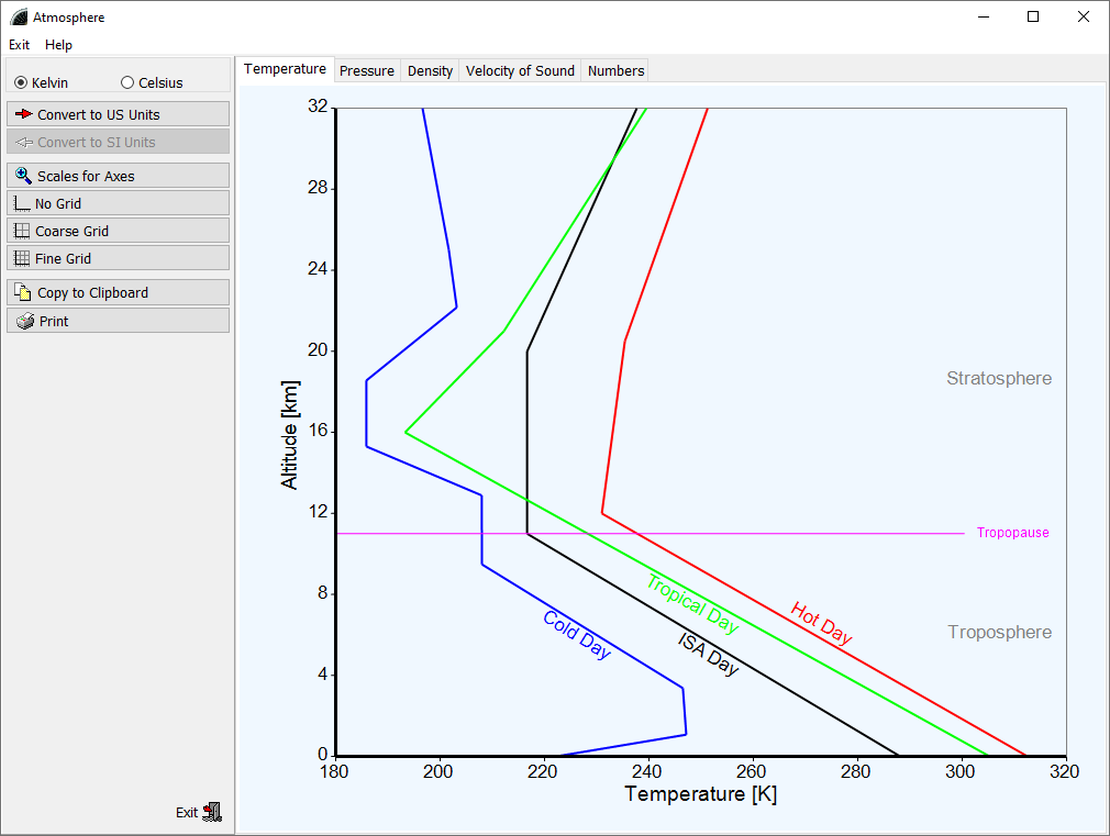
Flight Envelope
Total pressure, total temperature, Reynolds number, etc. within the flight envelope can be calculated. They can be displayed in an overview or evaluated in numbers.
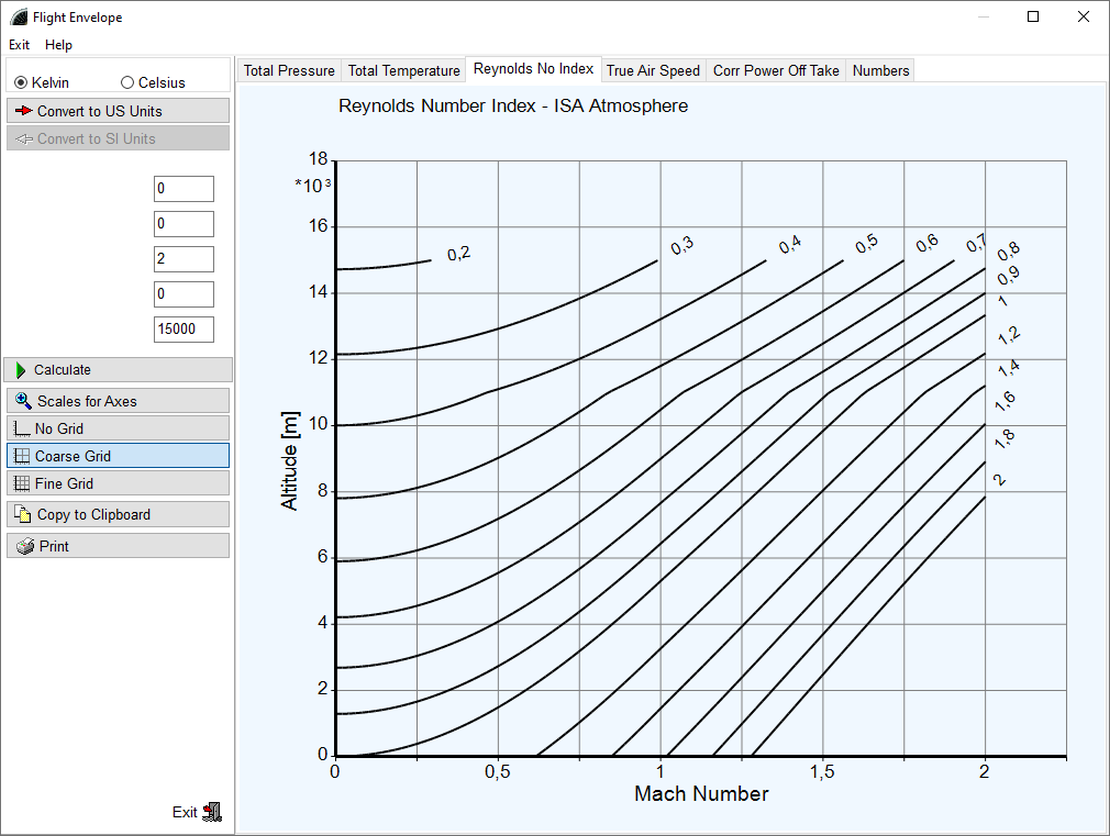
Disk Design
In GasTurb, by selecting “More” (...than Performance) in the main program window, it’s possible to calculate the basic geometry of the gas turbine, including the disks and their stresses, for a diversity of engine configurations. The shape of the disk can be adapted in such a way that the design margin is equal to a specified value, expressed as a percentage. A numerical optimization routine allows for the automatic optimization of the disk geometry.
The disks can be designed as part of the preliminary design within GasTurb or each of the disks can be designed separately employing GasTurb Details and then the results can be included into the cycle program. GasTurb Details has a much more detailed disk design output than GasTurb.
The stresses in the disk and the design margins depend on the material used in the manufacture of the disk. The program comes with a material database which contains information from open literature. The material database is a pure ASCII file which can be edited from within GasTurb Details or modified with any other text editor.

Read From a Picture
Information in form of a picture might be available, but for calculation numbers are needed. For example, a gas turbine manufacturer’s brochure containing the performance data for an engine might be given and its performance should be modeled using GasTurb.
Reading the numbers from such an image manually is quite time-consuming. It is much simpler and quicker with GasTurb Details: scan the picture and read it as bitmap into GasTurb Details. After setting the scales, numbers from the graph can be picked with mouse button clicks.
The numbers are written to a text file which can be used for any purpose, not only for performance calculations.
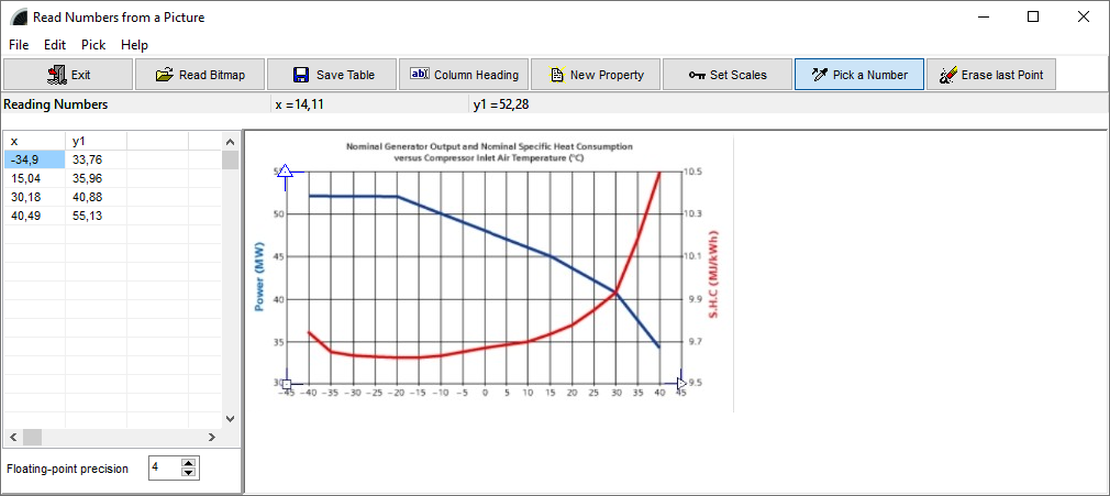
Manual
GasTurb Details comes with a comprehensive manual which describes the aforementioned functions, as well as many others provided in the program. Read the manual which can be downloaded here to find out more.
